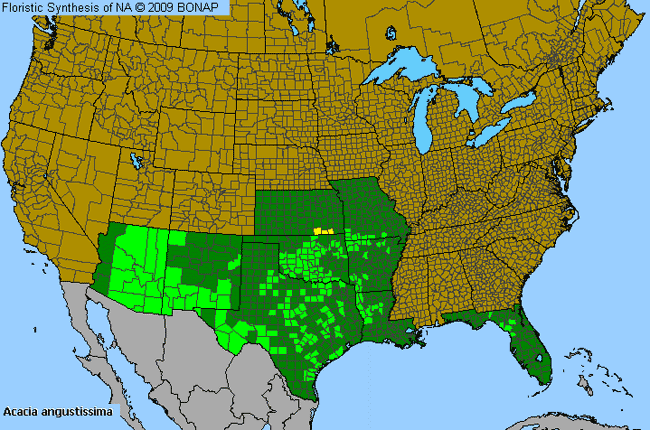Prairie Wattle (Acacia angustissima)

Prairie Wattle Species Description

This species is native to North America north of Mexico.
Allergenicity: Prairie Wattle (Acacia angustissima) is a mild allergen.
Pollination: Occurs in following seasons depending on latitude and elevation: Spring to Fall.
Angiosperm - Flowering Dicot: Plants in this group have two embryonic leaves (dicotyledons). Examples of dicotyledons are beans, buttercups, oaks, sunflowers, etc.
Tree: A large plant, not exactly defined, but typically over four meters in height, a single trunk which grows in girth with age and branches (which also grow in circumference with age).
Shrub: A woody plant smaller than a tree, and usually with several stems from the same root.
Forb: A broad-leaved herb other than a grass, especially one growing in a field, prairie, or meadow.
Perennial: Living for many years.
Woody Stem: Non-herbaceous. Lignified.
Herbaceous Stem: Not woody, lacking lignified tissues.
Prairie Wattle Species Usage

Chewing Gum: Used as a source of chewing gum or gum flavoring.
Pharmacological: Used in medicine or pharmacological research.
Related Links

More Prairie Wattle (Acacia angustissima) imagesby Jessie M. Harris from BONAP










